How CSAT Helps and Hinders Customer Satisfaction Measurement
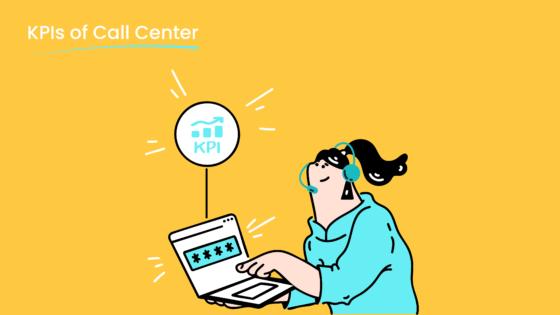
When it comes to understanding how happy your customers are, knowing "what is a CSAT score" is essential. CSAT, or Customer Satisfaction Score, is one of the simplest tools businesses can use to gauge customer satisfaction. It’s a metric that asks customers to rate their experience with a product or service, providing quick and actionable insights. For instance, a CSAT score of 82% in eCommerce indicates a high level of satisfaction, while scores below 75% highlight areas that may require improvement.
Sobot recognizes the importance of CSAT in enhancing customer experiences. While CSAT is excellent for capturing immediate feedback and identifying service issues, it may not fully reflect long-term customer loyalty or overall satisfaction. Selecting the right customer satisfaction metric, whether it’s CSAT or another tool, is crucial for businesses aiming to adopt a customer-centric approach. By understanding "what is a CSAT score" and leveraging tools like those offered by Sobot, companies can deliver superior experiences and drive continuous improvement.
What Is a CSAT Score and How Does It Work?

Definition of CSAT
You’ve probably heard the term CSAT thrown around in customer service discussions, but what is a CSAT score exactly? CSAT, short for Customer Satisfaction Score, is a simple yet powerful metric that measures how satisfied your customers are with a specific interaction, product, or service. It’s like taking a snapshot of your customer’s experience at a particular moment.
Industry benchmarks, like those collected by Zendesk, show that a CSAT score above 80% is considered good. However, benchmarks vary across industries. For example, consulting leads the pack with an average CSAT score of 84, while communication and media struggle at 22. These benchmarks help you understand where your business stands compared to others.
| Industry | CSAT Score | Comments |
|---|---|---|
| Consulting | 84 | Leading the CSAT benchmarks. |
| Ecommerce & Retail | 82 | Experienced a boost post-pandemic, reflecting improved customer satisfaction. |
| Healthcare | 81 | Improved values due to increased focus on customer satisfaction during the pandemic. |
| B2B Software & SaaS | 77 | Significant improvement noted in 2023. |
| Digital Marketing Agency | 72 | Following closely behind B2B Software & SaaS. |
| Internet & Software Services | 50 | Maintaining a decent level of customer satisfaction. |
| Education | 64 | Keeping up with good customer satisfaction values. |
| Communication & Media | 22 | Positioned at the lower end of the scale, indicating challenges in customer satisfaction. |
How CSAT Is Calculated
Calculating CSAT is straightforward. You ask your customers to rate their experience, usually on a scale of 1 to 5, where 1 means "very dissatisfied" and 5 means "very satisfied." Then, you use this formula:
(Number of satisfied customers (4 and 5) / Number of survey responses) x 100 = % of satisfied customers
For example, if 80 out of 100 customers rate their experience as 4 or 5, your CSAT score would be 80%. Some businesses use a slightly different method, dividing happy responses (ratings from 8-10) by the total number of surveys and multiplying by 10. Either way, the goal is to get a clear picture of how well you’re meeting customer expectations.
Common Applications of CSAT in Customer Service
CSAT isn’t just a number; it’s a tool that helps you improve your customer experience. By measuring CSAT, you can pinpoint areas that need attention, whether it’s a slow refund process or a confusing product feature. High CSAT scores can also become your competitive edge, showing potential customers that you prioritize satisfaction.
Take Schuh, for example. They used CSAT insights to enhance delivery options and innovate their customer service processes, boosting customer loyalty and lifetime value. When you analyze CSAT results, you’re not just improving individual interactions—you’re building a foundation for long-term success.
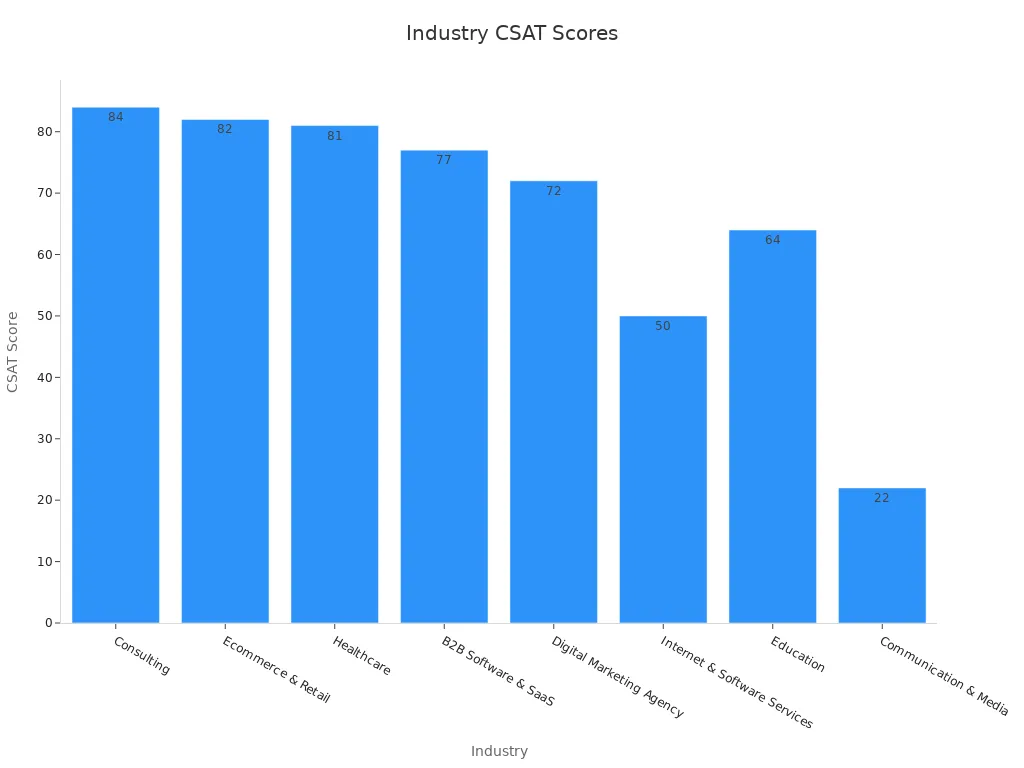
Role of CSAT in Enhancing Customer Experience with Sobot's Voice/Call Center
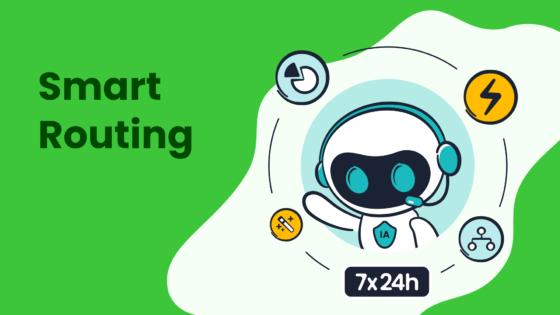
When you think about improving customer satisfaction, CSAT is one of the most effective tools to measure success. Sobot’s Voice/Call Center takes this metric to the next level by combining advanced features with AI-driven insights. It doesn’t just help you track satisfaction—it actively boosts it.
How Sobot’s Voice/Call Center Improves CSAT
Sobot’s Voice/Call Center uses intelligent tools to enhance every interaction. Features like AI-powered Voicebots and smart call routing ensure your customers get quick and accurate responses. This reduces frustration and increases satisfaction. For example, the platform’s AI-driven coaching has improved agent CSAT scores by an average of 20%. That’s a significant leap in customer happiness.
Here’s a snapshot of measurable impacts:
| Feature Description | Impact on CSAT |
|---|---|
| AI-driven coaching has improved agent Customer Satisfaction (CSAT) scores by an average of 20%. | +20% CSAT |
| Around 60% of contact centers report measurable improvements in customer satisfaction after integrating AI tools. | 60% improvement |
Why It Works
Sobot’s Voice/Call Center doesn’t just focus on efficiency—it prioritizes customer experience. The unified workspace lets your agents access customer data instantly, so they can personalize interactions. This makes customers feel valued. Plus, the platform’s real-time monitoring helps you identify issues before they escalate.
Imagine a scenario where a customer calls with a billing issue. With Sobot’s smart call routing, the call goes directly to the right agent. The agent sees the customer’s history in the unified workspace and resolves the issue quickly. That’s the kind of seamless experience that boosts CSAT.
A Proven Solution Across Industries
Whether you’re in retail, gaming, or financial services, Sobot’s Voice/Call Center adapts to your needs. Samsung, for instance, achieved a 97% customer satisfaction rate after implementing Sobot’s solution. By unifying communication channels and leveraging AI tools, they improved agent efficiency by 30% and delivered exceptional customer experiences.
With Sobot’s Voice/Call Center, you’re not just measuring CSAT—you’re improving it. Every feature is designed to make your customers happier and your business more successful.
Advantages of Using CSAT as a Customer Satisfaction Metric
Simplicity and Ease of Use
One of the biggest reasons businesses love CSAT is its simplicity. You don’t need a complex system to get started. A CSAT survey typically asks customers to rate their satisfaction on a scale of 1 to 5. This straightforward approach makes it easy for both you and your customers.
The calculation is just as simple:
CSAT = (Number of satisfied customers ÷ Total number of survey responses) × 100
This formula is quick to implement and understand, even if you’re new to customer satisfaction metrics. Plus, the simplicity of CSAT surveys ensures that customers don’t feel overwhelmed. They can share their feedback in seconds, making it more likely for them to participate.
For example, industries like consulting and healthcare, which often deal with diverse customer needs, benefit greatly from CSAT’s ease of use. Here’s a quick look at average CSAT scores across industries:
| Industry | Average CSAT Score |
|---|---|
| Consulting | 86% |
| Healthcare | 81% |
| E-commerce & Retail | 80% |
| Software | 78% |
| Banks | 78% |
| Health Insurance | 73% |
| Social Media Platforms | 71% |
| Online Travel | 70% |
| Internet Providers | 64% |
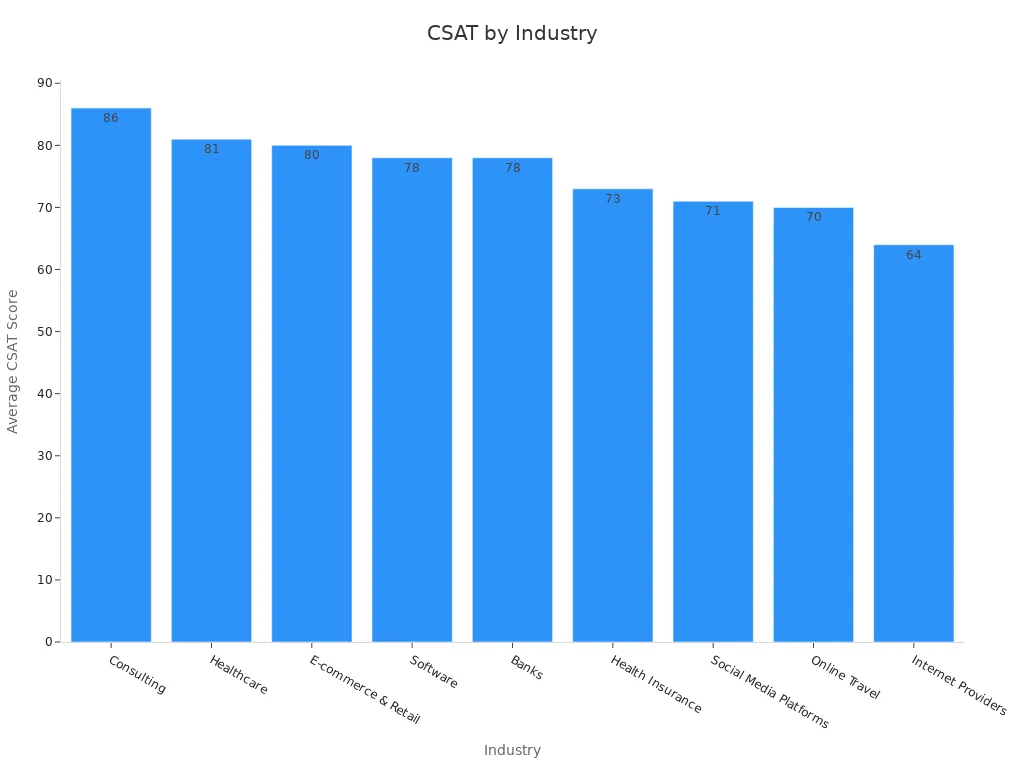
This simplicity makes CSAT a go-to customer satisfaction metric for businesses across industries. Whether you’re running a retail store or a tech company, CSAT helps you gather actionable customer feedback without any hassle.
Real-Time Feedback for Immediate Action
CSAT doesn’t just measure satisfaction—it helps you act on it. By collecting real-time feedback, you can address issues as they arise. Imagine a customer reporting a problem with your service. With CSAT, you can identify the issue immediately and take steps to resolve it before it escalates.
Real-time data also allows you to track shifts in customer sentiment. For instance, if your CSAT score drops after a new product launch, you’ll know something needs fixing. Businesses that continuously monitor CSAT, along with other metrics like NPS and CES, can make timely adjustments to their strategies. This proactive approach keeps your customers happy and loyal.
Sobot’s Voice/Call Center takes this a step further. Its real-time monitoring tools let you track CSAT scores during customer interactions. This means you can identify trends and improve service quality on the spot. For example, if an agent’s CSAT score dips, Sobot’s AI-driven coaching can help them improve, ensuring a better experience for your customers.
High Response Rates and Accessibility
CSAT surveys are short and to the point, which is why they often achieve high response rates. Customers are more likely to complete a survey that takes less than a minute. In fact, surveys longer than three minutes risk losing 15% of participants, while those over nine minutes see a 40% drop-off.
To maximize responses, keep your surveys simple and accessible. Mobile-friendly surveys, for instance, make it easy for customers to share their feedback on the go. Timing also matters. Sending a survey right after a customer interaction increases the chances of participation.
Here are some best practices to boost response rates:
- Keep surveys short and focused.
- Provide incentives, like discounts or loyalty points.
- Ensure surveys are mobile-friendly.
- Send surveys immediately after the customer’s experience.
Sobot’s omnichannel solution makes this process seamless. It automates CSAT surveys and ensures they’re sent at the right time, whether through email, SMS, or chat. This not only improves response rates but also helps you gather valuable insights to enhance your customer satisfaction strategy.
Applicability Across Industries, Including Sobot's Key Sectors
CSAT isn’t just a one-size-fits-all metric. Its versatility makes it a valuable tool across industries, helping businesses like yours understand what customers truly think. Whether you’re running a retail store, managing a financial service, or operating in the gaming world, CSAT can provide actionable insights to improve customer satisfaction. Let’s explore how different industries use CSAT and how Sobot’s solutions make it even more effective.
Retail and E-commerce: Meeting Customer Expectations
In retail, customer satisfaction often hinges on speed and convenience. A delayed delivery or a confusing return policy can quickly lower your CSAT score. By tracking CSAT, you can identify these pain points and fix them before they hurt your reputation.
For example, Sobot’s Omnichannel Solution helps retail businesses unify customer interactions across platforms like email, chat, and social media. Imagine a customer reaching out about a missing package. With Sobot’s unified workspace, your agents can access all the customer’s details in one place, resolve the issue faster, and boost satisfaction. Companies like Samsung have already seen a 30% increase in agent efficiency using Sobot’s tools, achieving a stellar 97% CSAT score.
Financial Services: Building Trust and Loyalty
In financial services, trust is everything. Customers expect quick resolutions to issues like account errors or loan inquiries. A low CSAT score here could signal a loss of trust, which is hard to regain.
Sobot’s Voice/Call Center is a game-changer for financial institutions. Its smart call routing ensures that customers connect with the right agent immediately. Plus, features like AI-powered Voicebots handle repetitive queries, freeing up agents to focus on complex issues. This not only improves efficiency but also enhances customer satisfaction.
Gaming: Keeping Players Engaged
The gaming industry thrives on engagement. Players want quick support when they encounter bugs or payment issues. A high CSAT score can indicate that your support team is meeting these expectations.
With Sobot’s AI-driven chatbots, gaming companies can provide 24/7 support, ensuring players get help whenever they need it. These chatbots can handle common queries, like account recovery or in-game purchases, while agents focus on more challenging tasks. This balance keeps players happy and engaged, improving your CSAT score.
Education: Enhancing the Learning Experience
In education, whether it’s online courses or traditional institutions, customer satisfaction often reflects the quality of support students receive. A low CSAT score might indicate issues like delayed responses or unclear communication.
Sobot’s Omnichannel Solution is perfect for educational institutions. It consolidates all student interactions into one platform, making it easier for your team to provide timely and accurate support. For instance, if a student has questions about enrollment, your agents can quickly access their history and provide a personalized response. This seamless experience boosts satisfaction and builds trust.
Enterprise Services: Streamlining Complex Operations
Enterprise services often deal with large-scale operations and diverse customer needs. Tracking CSAT helps you identify areas where your service might be falling short.
Sobot’s solutions, like the Voice/Call Center, offer features like real-time monitoring and data analytics. These tools help you track CSAT trends and make informed decisions to improve service quality. For example, if your CSAT score drops after implementing a new process, Sobot’s analytics can pinpoint the issue, allowing you to address it quickly.
Why CSAT Works Across Industries
CSAT’s simplicity and adaptability make it a go-to metric for businesses in any sector. It provides a clear snapshot of customer satisfaction, helping you make data-driven decisions. When combined with Sobot’s advanced tools, CSAT becomes even more powerful, enabling you to not just measure satisfaction but actively improve it.
Here’s a quick look at how CSAT applies across industries:
| Industry | Key CSAT Drivers | Sobot’s Role in Enhancing CSAT |
|---|---|---|
| Retail & E-commerce | Speed, convenience, and issue resolution | Unified workspace for faster resolutions |
| Financial Services | Trust, accuracy, and quick support | Smart call routing and AI-powered Voicebots |
| Gaming | 24/7 support and engagement | AI-driven chatbots for instant assistance |
| Education | Timely and clear communication | Omnichannel integration for seamless interactions |
| Enterprise Services | Efficiency and adaptability | Real-time monitoring and data-driven insights |
Pro Tip: No matter your industry, pairing CSAT with tools like Sobot’s Omnichannel Solution can help you turn customer feedback into actionable improvements.
By leveraging CSAT and Sobot’s innovative solutions, you can stay ahead in your industry and deliver experiences that keep your customers coming back.
Disadvantages of Using CSAT
Limited Scope of Measurement
CSAT is great for capturing how satisfied your customers feel about a specific interaction or service. However, it doesn’t give you the full picture. It focuses on individual transactions rather than the overall customer journey. For example, a customer might rate their experience with a product return process as excellent, but that doesn’t mean they’re happy with your brand as a whole.
This limited scope can make it hard to identify long-term trends or deeper issues. You might miss out on understanding whether your customers are loyal or if they’d recommend your business to others. Here’s a quick breakdown of CSAT’s measurement limitations:
| Disadvantage | Description |
|---|---|
| Limited scope of data | Measures satisfaction with individual transactions only |
| Does not measure loyalty | Fails to assess willingness to recommend your brand |
| Shallow insights | Lacks depth in understanding the overall customer journey |
To overcome this, you can pair CSAT with other metrics like NPS (Net Promoter Score) or CES (Customer Effort Score). Sobot’s omnichannel solution makes it easy to track multiple metrics, giving you a more comprehensive view of your customer satisfaction strategy.
Risk of Response Bias
One of the biggest challenges with CSAT is response bias. Customers might feel pressured to give positive feedback, especially if they’re interacting directly with an agent. For instance, a customer might rate their experience as “very satisfied” just to avoid conflict, even if they weren’t entirely happy.
Response bias can also stem from cultural or demographic factors. Different groups of people may interpret survey questions differently, which can skew your results. Here’s a closer look at factors that influence response bias:
| Factor | Description |
|---|---|
| Sampling Techniques | Random sampling helps avoid voluntary response bias, ensuring a representative sample of the population. |
| Demographic Factors | Age, gender, ethnicity, and education can significantly influence how individuals respond to surveys. |
| Cultural Background | Cultural norms affect how questions are perceived and answered, impacting the accuracy of survey results. |
To minimize bias, you can use anonymous surveys or random sampling techniques. Sobot’s Voice/Call Center supports automated surveys that can be sent after interactions, reducing the pressure on customers to provide overly positive ratings.
Lack of Predictive Insights Compared to Other Metrics
CSAT is excellent for understanding how your customers feel in the moment, but it falls short when it comes to predicting future behavior. It doesn’t tell you why a customer is satisfied or dissatisfied, nor does it provide insights into their likelihood to stay loyal or churn.
Here are some key limitations of CSAT’s predictive capabilities:
- Lack of Detail: CSAT doesn’t explain the reasons behind customer satisfaction or dissatisfaction.
- Potential for Response Bias: Customers with extreme experiences are more likely to respond, skewing the results.
- Short-Term Focus: CSAT measures satisfaction with specific interactions, not long-term loyalty.
- Limited Predictive Power: It’s not always a reliable indicator of future customer behavior.
For instance, a low CSAT score might suggest a risk of customer churn, but it won’t tell you what caused the dissatisfaction. To gain deeper insights, you can combine CSAT with tools like Sobot’s analytics platform. It provides real-time data and trends, helping you understand the root causes of customer issues and take proactive steps to improve service quality.
Pro Tip: Use CSAT as part of a broader strategy. Pair it with other metrics and tools to get a complete picture of your customer experience.
Challenges in Capturing Comprehensive Customer Experience
Measuring customer satisfaction with CSAT is helpful, but it doesn’t always tell the whole story. You might find yourself wondering why your CSAT score looks great, yet customers still leave negative reviews or switch to competitors. That’s because CSAT focuses on specific interactions rather than the bigger picture.
Why CSAT Alone Falls Short
When you rely solely on CSAT, you miss out on important details about your customers’ overall journey. Here are some common challenges businesses face:
- Understanding Expectations: CSAT doesn’t explain what your customers truly expect from your brand. It only shows how they felt about one interaction.
- Lagging Indicator: CSAT tells you what happened after the fact. It doesn’t predict future behavior or highlight trends before they become problems.
- Fragmented Insights: CSAT surveys don’t pull data from multiple sources, like social media or product reviews. This limits your ability to see the full picture of customer sentiment.
These gaps can leave you guessing about what’s really driving satisfaction—or dissatisfaction.
The Need for a Holistic Approach
To capture a comprehensive customer experience, you need more than just CSAT. Think of it like trying to solve a puzzle with only half the pieces. You need tools that work together to give you a complete view.
Tip: Combine CSAT with other metrics like NPS (Net Promoter Score) and CES (Customer Effort Score). This helps you understand loyalty, effort, and satisfaction all at once.
Sobot’s Omnichannel Solution makes this easier. It integrates data from various channels—voice, chat, email, and more—into one platform. This unified approach lets you see how customers interact with your brand across their entire journey.
How to Overcome These Challenges
You can tackle these challenges by focusing on three key strategies:
-
Dive Deeper into Customer Expectations
Use surveys and analytics to uncover what customers really want. For example, are they looking for faster service or more personalized support? Sobot’s AI-powered tools can analyze customer interactions to reveal these insights. -
Track Trends in Real Time
Don’t wait for problems to show up in your CSAT score. Monitor customer sentiment across all channels. Sobot’s real-time analytics help you spot issues early, so you can act before they escalate. -
Integrate Multiple Data Sources
Combine CSAT with data from reviews, social media, and support tickets. This gives you a broader view of customer sentiment. Sobot’s unified workspace makes it easy to bring all this information together.
Why It Matters
Capturing the full customer experience isn’t just about improving satisfaction scores. It’s about building trust and loyalty. When you understand your customers’ needs and frustrations, you can create experiences that keep them coming back.
With tools like Sobot’s Omnichannel Solution, you’re not just measuring satisfaction—you’re transforming it. By addressing these challenges, you’ll gain a deeper understanding of your customers and deliver the kind of service they’ll rave about.
Comparing CSAT to Other Customer Satisfaction Metrics

CSAT vs. NPS (Net Promoter Score)
When comparing CSAT and Net Promoter Score, it’s important to understand their focus. CSAT measures how satisfied your customers are with a specific interaction or service. On the other hand, NPS looks at the bigger picture, gauging customer loyalty and their likelihood to recommend your brand.
| Metric | Focus | Description |
|---|---|---|
| CSAT | Transactional | Measures customer satisfaction regarding a specific product or service. |
| NPS | Relational | Measures the overall relationship and loyalty of the customer towards the brand. |
CSAT gives you quick, actionable insights. For example, if a customer rates their experience poorly after a call, you can address the issue immediately. NPS, however, provides a long-term view. It helps you understand whether your customers are loyal advocates or at risk of leaving.
Here’s a key difference: CSAT focuses on the “now,” while NPS predicts the future. NPS is calculated by subtracting the percentage of detractors from promoters. This score reflects how likely your customers are to recommend your business. Both metrics are valuable, but they serve different purposes.
CSAT vs. CES (Customer Effort Score)
CSAT and CES measure different aspects of the customer experience. CSAT asks how happy customers are with a specific interaction. CES, however, focuses on how easy it was for customers to complete a task, like resolving an issue or making a purchase.
- CSAT measures satisfaction with a specific experience, often using a scale from 1 to 5.
- CES evaluates effort, asking how easy it was to get what they needed, typically on a scale from 1 (very difficult) to 7 (very easy).
Research shows that reducing customer effort can significantly boost loyalty. For instance, if your service team resolves issues quickly and efficiently, customers are more likely to stick around. While CSAT is versatile and works across various touchpoints, CES is particularly useful in customer service scenarios.
When to Use CSAT Over Other Metrics
CSAT shines in situations where you need immediate feedback. For example, an e-commerce retailer used CSAT surveys after purchases and saw scores jump from 75% to 85% in six months. They identified pain points like shipping delays and improved their processes, leading to happier customers.
High CSAT scores often correlate with increased retention and reduced churn. If you’re looking to measure satisfaction with specific interactions, CSAT is your go-to metric. However, pairing it with NPS or CES can give you a more comprehensive view of your customer experience.
Pro Tip: Use CSAT to track short-term satisfaction and combine it with NPS for long-term loyalty insights. Tools like Sobot’s Omnichannel Solution make it easy to manage multiple metrics in one place.
How Sobot's Omnichannel Solution Supports Multiple Metrics
When it comes to tracking customer satisfaction, you need tools that can handle multiple metrics without breaking a sweat. That’s where Sobot’s Omnichannel Solution shines. It’s designed to give you a complete view of your customer experience by integrating metrics like CSAT, NPS, and CES into one powerful platform. Whether you’re measuring satisfaction, loyalty, or effort, Sobot makes it easy to gather and analyze data across all channels.
Why Sobot’s Omnichannel Solution Stands Out
Sobot’s platform doesn’t just collect data—it turns it into actionable insights. Imagine being able to see how your CSAT scores compare to your NPS trends or how your CES results align with customer feedback. With Sobot, you can do all that and more. Its unified workspace consolidates customer interactions, so you don’t have to jump between systems to understand what’s working and what’s not.
Here’s a quick look at how Sobot’s Omnichannel Solution impacts key metrics:
| Metric | Value |
|---|---|
| Reduction in inbound discussion | 20% |
| Increase in positive feedback | 96% |
| Correct answers by AI platform | 80% |
| Customer satisfaction (CSAT) | 97% |
| Problems solved | 85% |
| Customer happiness | 99% |
| Sign-off rate increase | 35% |
| COD collection rate increase | 40% |
These numbers aren’t just impressive—they’re proof that Sobot’s solution works across industries. Whether you’re in retail, gaming, or financial services, you’ll see measurable improvements in customer satisfaction and operational efficiency.
How It Works
Sobot’s AI-driven tools play a big role in supporting multiple metrics. For example, its chatbots handle repetitive queries with an 80% accuracy rate, freeing up your agents to focus on complex issues. This boosts your CES by reducing customer effort while improving CSAT through faster resolutions. Plus, the platform’s analytics help you spot trends and make informed decisions to keep your NPS scores high.
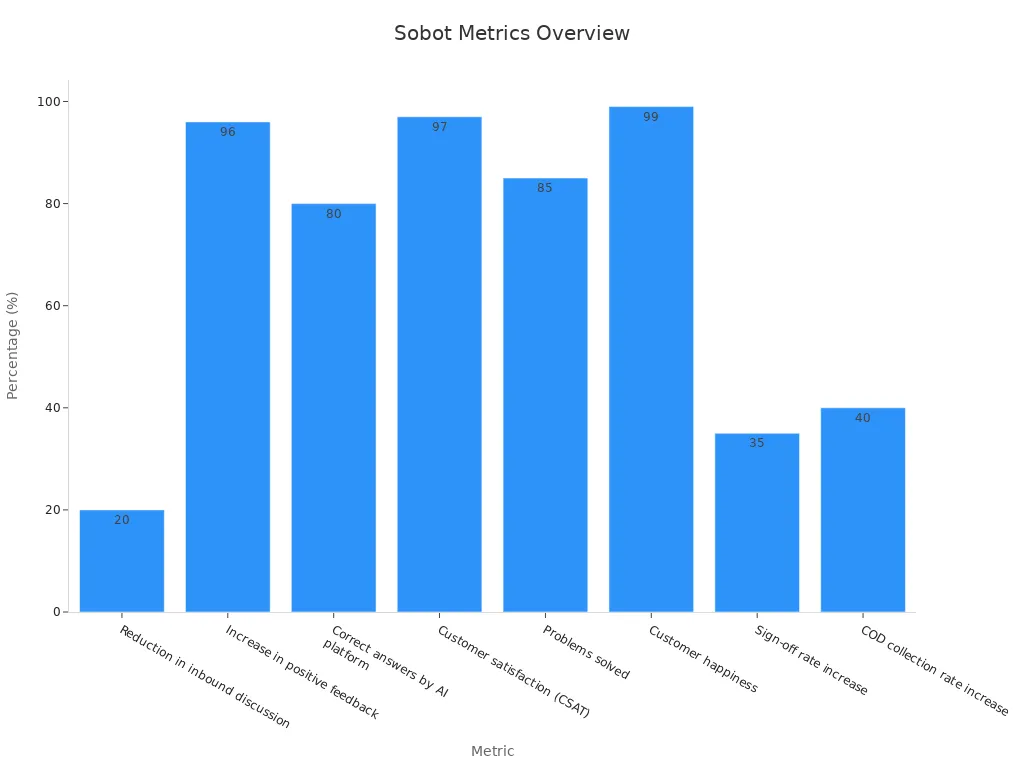
Why It Matters
Tracking multiple metrics isn’t just about collecting data—it’s about understanding your customers better. Sobot’s Omnichannel Solution helps you connect the dots between satisfaction, loyalty, and effort. By using a single platform to manage these metrics, you’ll save time, reduce costs, and deliver experiences that keep your customers coming back.
Pro Tip: Pair CSAT with NPS and CES to get a full picture of your customer experience. Sobot’s tools make it simple to track and improve all three metrics in one place.
With Sobot’s Omnichannel Solution, you’re not just measuring satisfaction—you’re mastering it.
When Is CSAT the Right Choice for Your Business?
Scenarios Where CSAT Excels
CSAT works best when you need quick feedback on specific interactions. It’s ideal for businesses that want to measure satisfaction with individual touchpoints, like customer service calls or product purchases. For example, healthcare providers use CSAT to improve patient experiences by collecting real-time feedback through kiosks. This approach helped Mayo Clinic boost satisfaction scores by tailoring services to patient needs.
In finance, CSAT shines when you focus on trust and efficiency. By mapping customer journeys, financial institutions can identify areas for improvement, like streamlining loan applications or resolving account issues faster. Technology companies also benefit from CSAT by using it to refine product features and support services. Apple and Microsoft, for instance, leverage CSAT insights to innovate their offerings and enhance customer satisfaction.
| Sector | Key Focus Areas | Example Application |
|---|---|---|
| Healthcare | Improving patient experiences through tailored surveys | Mayo Clinic's real-time feedback kiosks leading to improved patient satisfaction scores |
| Finance | Enhancing services by focusing on trust, efficiency, and customer understanding | Utilizing Customer Journey Maps to identify touchpoints for improvement in financial services |
| Technology | Innovating tech support by collecting product feedback | Companies like Apple and Microsoft using CSAT insights to refine services and product features |
Situations Where CSAT Falls Short
While CSAT is great for measuring immediate satisfaction, it has limitations. It doesn’t provide context for why customers feel the way they do. For example, a chatbot might achieve a high CSAT score, but metrics like deflection rate or fall-back rate could reveal inefficiencies in handling complex queries.
CSAT also struggles to capture the bigger picture. It focuses on individual interactions rather than the overall customer experience. Metrics like NPS and CES complement CSAT by assessing loyalty and effort, respectively. For instance, NPS gauges long-term advocacy, while CES evaluates how easy it is for customers to complete tasks. Combining these metrics gives you a more comprehensive view of your customer satisfaction strategy.
| Metric | Description | Importance |
|---|---|---|
| Goal Completion Rate | Aim for ≥90% to ensure users achieve their objectives with the chatbot. | Indicates effectiveness of the bot. |
| Deflection Rate | 60–90% is considered good; measures how well the bot handles inquiries. | Shows efficiency in customer service. |
| Fall-Back Rate | Measures how often users need to escalate to a human agent. | Highlights areas for improvement. |
| Cost per Conversation | Evaluates the financial efficiency of chatbot interactions. | Important for ROI assessment. |
| CSAT Score | Overall customer satisfaction with the chatbot. | Primary metric but needs context. |
Tips for Integrating CSAT with Other Metrics
To get the most out of CSAT, pair it with complementary metrics like NPS and CES. Start by collecting data from each metric. Use CSAT to understand immediate satisfaction and NPS to assess long-term loyalty. Then, analyze the results to identify correlations and discrepancies.
For example, if your CSAT scores are high but NPS scores are low, you might need to address deeper issues affecting customer loyalty. Sobot’s Omnichannel Solution simplifies this process by integrating multiple metrics into one platform. It connects customer feedback to business outcomes, helping you make informed decisions.
Best practices include combining operational data with survey feedback to gain nuanced insights. Establishing Voice of the Customer (VoC) programs can also help capture sentiment across channels. By democratizing data, you ensure that everyone in your organization understands customer needs and works toward improving satisfaction.
| Best Practice | Description |
|---|---|
| Combine Data | Integrate operational data with survey feedback to gain a nuanced understanding of customer experience. |
| Link to Business Outcomes | Connect customer experience metrics to tangible business outcomes and ROI to demonstrate their impact. |
| Democratize Data | Provide access to customer feedback across the organization to foster a customer-centric culture. |
Pro Tip: Use CSAT to identify immediate issues and NPS to build long-term strategies. Together, they create a powerful framework for improving customer satisfaction.
Leveraging Sobot's Solutions to Maximize CSAT Effectiveness
If you’re looking to boost your CSAT scores, Sobot’s solutions are designed to make it easier than ever. With tools like the Voice/Call Center and Omnichannel Solution, you can transform customer interactions into seamless, satisfying experiences. Let’s dive into how Sobot helps you maximize CSAT effectiveness.
Unified Communication for Better Insights
Sobot’s Omnichannel Solution brings all your customer interactions into one place. Whether your customers reach out via email, chat, or social media, your team can handle everything from a single workspace. This unified approach eliminates the frustration of switching between platforms. It also gives your agents access to complete customer histories, so they can resolve issues faster. For example, Samsung used Sobot’s platform to unify its communication channels and achieved a 97% CSAT score. That’s the power of streamlined communication.
Real-Time Monitoring and AI-Driven Tools
Sobot’s Voice/Call Center takes customer satisfaction to the next level with real-time monitoring and AI-powered features. Imagine being able to track CSAT scores during live interactions. If a customer seems unhappy, your team can step in immediately to turn things around. Plus, Sobot’s AI-driven Voicebots handle repetitive queries, freeing up agents to focus on complex issues. This balance improves efficiency and keeps customers happy.
Data-Driven Decisions for Continuous Improvement
Sobot doesn’t just help you measure CSAT—it helps you improve it. The platform’s analytics tools provide actionable insights, showing you what’s working and what needs attention. For instance, if your CSAT scores dip after a product launch, Sobot’s data can pinpoint the problem. You’ll know exactly where to focus your efforts.
Pro Tip: Pair Sobot’s solutions with CSAT surveys to get a full picture of your customer experience. The combination of real-time data and actionable insights will help you stay ahead of customer expectations.
With Sobot, you’re not just tracking satisfaction—you’re building it. Ready to see the difference? Explore Sobot’s solutions here.
CSAT offers a simple way to measure customer satisfaction, but it’s not without its challenges. Its advantages include ease of use, real-time feedback, and versatility across industries. However, it has limitations, like focusing on short-term sentiment and being prone to response bias.
| Advantages | Disadvantages |
|---|---|
| Simplicity: Easy for customers to understand and complete | Limited scope: Focuses on short-term satisfaction rather than long-term loyalty |
| Immediacy: Captures real-time feedback on specific interactions | Response bias: Extremely satisfied or dissatisfied customers are more likely to respond |
| Versatility: Can be used across various touchpoints in the customer journey | Lack of context: May not provide reasons behind the satisfaction rating without additional questions |
| Actionable insights: Helps identify specific areas for improvement | Cultural differences: Interpretation of satisfaction can vary across cultures. |
To make the most of CSAT, you need to align it with your business goals. Use it to track specific interactions while pairing it with metrics like NPS for a broader view of customer loyalty. Tools like Sobot’s Voice/Call Center help you gather actionable insights and improve the customer experience. By combining CSAT with advanced solutions, you’ll create a strategy that keeps your customers happy and loyal.
Tip: Don’t rely on CSAT alone. Pair it with other metrics to capture the full picture of your customer’s journey.
FAQ
1. What is the best time to send CSAT surveys?
Timing is everything! Send surveys right after a customer interaction. Whether it’s a purchase or a support call, catching customers while the experience is fresh increases response rates and ensures accurate feedback.
2. Can CSAT be used with other metrics like NPS or CES?
Absolutely! Pair CSAT with NPS to measure loyalty or CES to track effort. Together, these metrics give you a complete view of customer satisfaction and help you identify areas for improvement.
3. How can Sobot’s tools improve CSAT scores?
Sobot’s solutions streamline communication and automate repetitive tasks. Features like AI-powered Voicebots and unified workspaces help agents resolve issues faster, boosting customer satisfaction and CSAT scores.
4. Is CSAT suitable for all industries?
Yes! CSAT works across industries like retail, gaming, and financial services. Its simplicity makes it adaptable to different customer touchpoints, helping businesses improve satisfaction in diverse sectors.
5. What’s the easiest way to reduce response bias in CSAT surveys?
Keep surveys anonymous and simple. Use neutral language and random sampling techniques. Sobot’s automated survey tools ensure unbiased feedback by removing pressure from customers during interactions.
See Also
Enhancing Efficiency With AI-Driven Customer Service Tools
Ten Strategies to Improve Live Chat Customer Experience
Increasing E-Commerce Customer Satisfaction Through Chatbots
